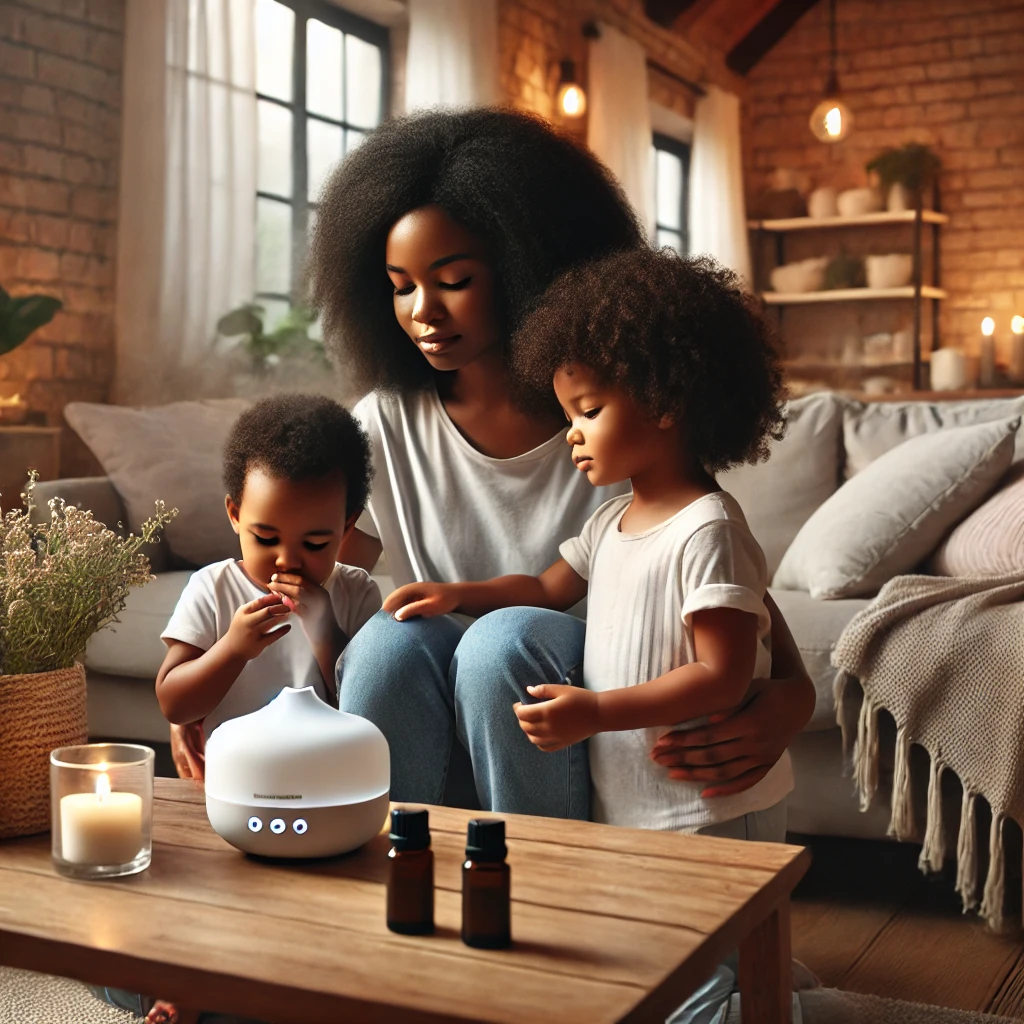Aromatherapy for Kids: What’s Safe and What’s Not

Share
Summary
Essential oils can offer wonderful benefits for children — from calming tantrums to soothing sniffles. But when it comes to little ones, safety is everything. This guide explores which essential oils are safe for children, how to use them, and which ones to avoid.
Essential oils may be natural — but that doesn’t automatically mean they’re safe for everyone.
Children, especially babies and toddlers, have thinner skin, faster metabolisms, and developing respiratory systems. This makes them more sensitive to essential oils than adults — and more vulnerable to their effects (both positive and negative).
So how can we safely introduce aromatherapy to children?
Let’s break it down: what’s safe, what’s not, and how to make aromatherapy a gentle and supportive part of your child’s wellness routine.
Why Use Aromatherapy for Children?
When used correctly, essential oils can help children with:
- Sleep issues
- Anxiety and tantrums
- Mild respiratory congestion
- Tummy troubles
- Bug bites and minor skin irritation
Plus, they offer a lovely way to build bedtime rituals, encourage mindfulness, and create calming environments.
General Safety Rules for Kids
-
✅ Always dilute essential oils
Children require much lower concentrations than adults. Typical guidelines:- Babies (0–2 years): 0.25% dilution (1 drop per 4 teaspoons carrier oil)
- Toddlers (2–6 years): 0.5–1% dilution
- Children (6–12 years): 1–2% dilution
-
✅ Use child-friendly methods
Stick to gentle application methods:- Diffusion (short sessions in a well-ventilated room)
- Diluted topical use (feet, back, or chest)
- Pre-diluted rollerballs or bath oils (made for children)
-
❌ Never use undiluted oils on children's skin
This can lead to burns, allergic reactions, or respiratory distress. -
❌ Avoid internal use
Children should never ingest essential oils unless prescribed by a qualified clinical aromatherapist or healthcare provider. -
✅ Do a patch test
Always test diluted oil on a small area of skin before wider use.
Best Essential Oils for Children (by age)
👶 Babies (3+ months to 2 years)
✅ Safe oils (when diluted appropriately):
- Chamomile (Roman) – Soothing, helps with teething and sleep
- Lavender – Calming, gentle, supports sleep and skin
- Distilled Lemon – Uplifting, gentle respiratory support
- Frankincense – Gentle grounding, safe in small amounts
🧴 How to use:
- 1 drop of oil in a diffuser for 15–30 minutes
- 1 drop in 1 tbsp carrier oil for massage (e.g., bedtime feet rub)
- Add to bath only if pre-diluted in milk or oil
🧒 Toddlers (2–6 years)
✅ Safe oils:
- All of the above, plus:
- Cedarwood (Atlas) – Calming and grounding
- Mandarin – Uplifting and tummy-soothing
- Tea Tree – Immune-supporting, anti-microbial (use sparingly)
- Spearmint – Milder alternative to peppermint for congestion
🧴 How to use:
- Diffuser blends (1–2 drops in a water-based diffuser)
- Pre-diluted rollers (0.5–1% blend) for sleep or focus
- Bath oils (always emulsified and diluted)
🧑 Children (6–12 years)
✅ Safe oils:
- All previously mentioned, plus:
- Eucalyptus radiata – Respiratory support (avoid globulus in younger children)
- Rosemary (verbenone chemotype only) – Focus and clarity
- Sweet Orange – Mood-boosting and energising
🧴 How to use:
- “Homework” blends for focus
- Morning diffusers to uplift mood
- Roller blends for school anxiety or minor tummy issues
Oils to Avoid for Children
❌ Peppermint (under age 6): Can slow breathing in young children
❌ Eucalyptus globulus (under 3): May be too strong for small airways
❌ Cinnamon bark/clove: Highly irritating to skin and mucous membranes
❌ Wintergreen: Contains methyl salicylate — toxic if ingested
❌ Oregano and thyme (thymol type): Too hot and intense
❌ Birch, sage, fennel, rosemary (camphor type): Hormone-like effects or neurotoxic potential
When in doubt, choose oils labelled specifically for children — or consult a qualified aromatherapist.
Kid-Friendly Diffuser Blend Ideas
Sleepytime Blend (Age 2+)
- 2 drops lavender
- 1 drop Roman chamomile
Diffuse 30 mins before bed in a well-ventilated room.
Sniffles & Sneezes (Age 3+)
- 1 drop eucalyptus radiata
- 1 drop lemon
- 1 drop frankincense
Tantrum Tamer (Age 2+)
- 2 drops mandarin
- 1 drop lavender
- 1 drop cedarwood
Final Thoughts
Aromatherapy can be a beautiful, gentle way to support your child’s wellbeing — emotionally, physically, and even energetically. But it’s not one-size-fits-all, especially when it comes to little ones.
By following dilution guidelines, choosing age-appropriate oils, and using safe application methods, you can enjoy all the benefits aromatherapy offers — with peace of mind.
Because when used wisely, a little drop can go a long way.
Sources
- Tisserand, R. & Young, R. (2014). Essential Oil Safety: A Guide for Health Care Professionals (2nd ed.).
- Koulivand, P.H. et al. (2013). Lavender and the nervous system. Evidence-Based Complementary and Alternative Medicine.
- Hongratanaworakit, T. (2004). Physiological effects of aromatherapy with ylang ylang oil. Phytotherapy Research.
- Price, S. & Price, L. (2011). Aromatherapy for Health Professionals (4th ed.).
